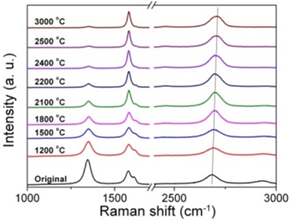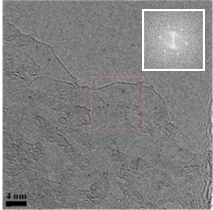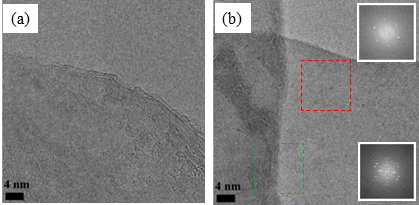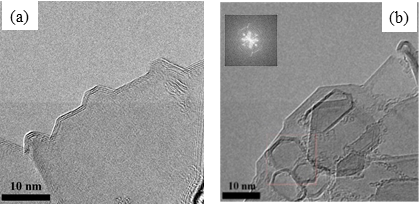信州大学
2013年度 成果事例
【研究目的】 Due to their special structures and extraordinary physical/chemical properties, the vertically-oriented carbon nanosheets (CNSs), which consist of few- to multi-layer of graphene sheets, have been utilized in field-emission emitters, catalyst support for fuel cells, magnetoelectronic devices , electrodes for biosensors and electrochemical energy devices . Besides graphene structure, the CNSs were composed of some amorphous carbon, open edges, and many defects that contain dangling bonds, vacancies, dislocations, et al. Experimental results exhibited that the physical/chemical properties strongly depend on the morphology, microstructure, composition, and crystallinity of the CNSs, further resulting into their different applications. High-temperature treatment (HTT) has a strong influence on the structural and microtextural characteristics of carbon materials. In this work, systematic studies of structural changes in CNSs by HTT are carried out in Ar atmosphere.
【成 果】 Vertically-aligned CNSs, which were fabricated by microwave plasma-enhanced chemical vapor deposition in Ar and CH4 system, have been annealed at high temperatures in the range of 1200 to 3000 oC. The morphologies and microstructures of the treated CNSs were analyzed by scanning and transmission electron microscopes (SEM and TEM), and Raman spectroscopy. High temperature treatment process efficiently removed the amorphous carbon and some defects and improved the graphitization of the CNSs. The graphitized grains increase and the interlayer spacing decreases with increasing heat temperatures. Heat treatment of the CNSs at temperatures from 1500 to 2000 oC was found to achieve the edges consisting of many single-layer graphene (SLG) sheets. Annealing at temperatures above 2100 oC, the edges of nanosheets consist of 2-5 layer graphene with many zigzag junctions. The mechanism of reconstruction for the edges in the CNSs ascribes possibly to the carbon atom vaporization at high temperatures.

Fig. 1 (a) Typical top-view SEM images of the original CNSs synthesized by MPECVD technique in Ar and CH4 system for 60 min. (b) Low- (c) and high-magnification TEM images of the MPECVD-grown CNSs

Fig. 2 Raman spectra of the top-view CNSs treated at different temperatures in 1200-3000 oC.

Fig. 3 TEM image of the CNSs treated at 1500 oC. Inset: FFT of TEM image of SLG in red box.
Fig. 4 (a) and (b) TEM images of the CNSs treated at 2100 oC. Inset in (b): FFT of TEM images in red box (SLG) and green box (Few-layer graphene).

Fig. 5 TEM image of the CNSs treated at 2500 oC.
Fig. 6 (a) and (b) TEM images of the CNSs treated at 3000 oC. Inset in (b): FFT of TEM image of carbon onions








